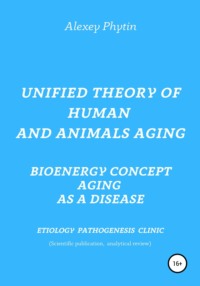Kitobni o'qish: «Unified theory of human and animals aging. Bioenergy concept aging as a disease»
Biror narsa noto‘g‘ri ketdi, keyinroq qayta urinib ko‘ring
Janrlar va teglar
Yosh cheklamasi:
16+Litresda chiqarilgan sana:
20 aprel 2022Yozilgan sana:
2022Hajm:
143 Sahifa 6 illyustratsiayalarMualliflik huquqi egasi:
Автор